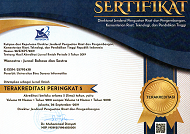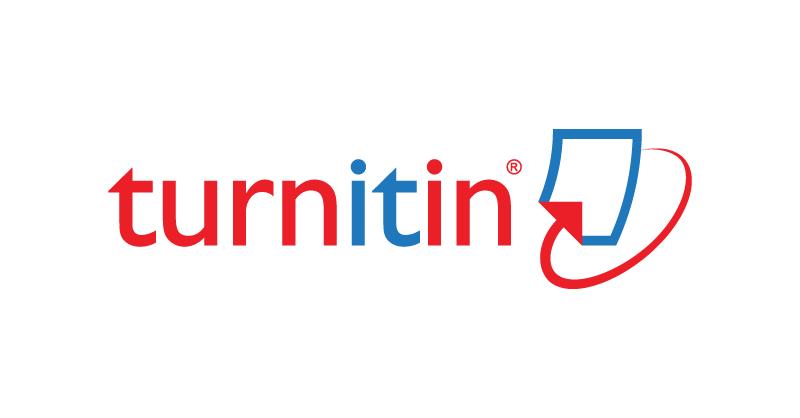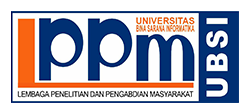Request Strategy In “Cinta Brontosaurus” Novel by Raditya Dika
Abstract
The title of this research is request strategy in “Cinta Brontosaurus” novel by Raditya Dika. The purpose of this research is to find how the characters in “Cinta Brontosaurus” novel ask someone to do something or not to do something. This research is analyzed by using theory request from Trosborg. This study uses descriptive qualitative perspective. 16 data are taken from “Cinta Brontosaurus” novel. The conclusions of this research are there are three request strategies apply in utterances. Request strategy is mostly used by the characters is elliptical in request strategy 8. By using this strategy, the speaker wants to state his or her intention explicitly. Next request strategy is mild and strong hint in strategy 1. It is used to minimize the possible refusal and to soften the request. Besides that, this strategy is the important way for the speaker to get the permission and check the hearer’s ability. Not only female but also male want to minimize the possible refusal and to soften the request in a polite way.
Full Text:
PDFReferences
Basra, S. M. (2023). Speech Acts Analysis of the Main Characters in Tinder Swindler Documentary Film. JALL (Journal of Applied Linguistics and Literacy), 7(1), 154. https://doi.org/10.25157/jall.v7i1.9737
Boux, I., Tomasello, R., Grisoni, L., & Pulvermüller, F. (2021). Brain signatures predict communicative function of speech production in interaction. Cortex, 135, 127–145. https://doi.org/10.1016/j.cortex.2020.11.008
Burnette, J., & Calude, A. S. (2022). Wake up New Zealand! Directives, politeness and stance in Twitter #Covid19NZ posts. Journal of Pragmatics, 196, 6–23. https://doi.org/10.1016/j.pragma.2022.05.002
Creswell, J. W. (2019). Researc Design: Pendekatan, Metode Kualitatif, Kuantitatif, Campuran. Pustaka Pelajar.
Dika, R. (2017). Cinta Brontosaurus. GagasMedia.
Kun Hariani, A. G., Muhid, A., & Dewi, P. (2021). Revealing the Form of Directive Speech in Ready or Not Movie. Humanitatis : Journal of Language and Literature, 8(1), 1–12. https://doi.org/10.30812/humanitatis.v8i1.1177
Motschenbacher, H. (2020). Coming out – seducing – flirting: Shedding light on sexual speech acts. Journal of Pragmatics, 170, 256–270. https://doi.org/10.1016/j.pragma.2020.09.014
Muhartoyo, M., & Kristani, K. (2013). Directive Speech Act in The Movie “Sleeping Beauty.” Humaniora, 4(2), 949. https://doi.org/10.21512/humaniora.v4i2.3536
Mulyani, U., & Latifah, D. (2018). the Analysis Speech Acts of the Main Character in Freedom Writers Movie Script. PROJECT (Professional Journal of English Education), 1(5), 562. https://doi.org/10.22460/project.v1i5.p562-567
Ramayanti, D., & Marlina, L. (2018). The analysis of types illocutionary acts in “Tangled” movie. E-Journal of English Language and Literature, 7(1), 27–34.
Sari, R. I. (2018). Bentuk Tuturan Direktif Pada Guru Dalam Situasi Pembelajaran Bahasa Indonesia Siswa Kelas X Man Malang 1. KEMBARA: Jurnal Keilmuan Bahasa, Sastra, Dan Pengajarannya, 3(1), 79. https://doi.org/10.22219/kembara.vol3.no1.79-97
Saville-Troike, M. (1982). The Ethnography of Communication. Basil Blacwell Ltd.
Simon, S., & Dejica-Cartis, D. (2015). Speech Acts in Written Advertisements: Identification, Classification and Analysis. Procedia - Social and Behavioral Sciences, 192, 234–239. https://doi.org/10.1016/j.sbspro.2015.06.033
Sumarti, S., & Widodo, P. (2019). An Analysis of Non-Conventionally Indirect Request in Haikyuu!! (1st Season) Anime. Journal of English Language Teaching and Linguistics, 4(1), 87. https://doi.org/10.21462/jeltl.v4i1.196
Thomas, J. (1995). Meaning in Interaction: An Introduction to Pragmatics. Longman.
Tomasello, R. (2023). Linguistic signs in action: The neuropragmatics of speech acts. Brain and Language, 236(May 2022), 105203. https://doi.org/10.1016/j.bandl.2022.105203
Trosborgh, A. (1995). Inter-Langauge Pragmatic: Request, Complaints, and Apologies. Mouton de Gruyter.
Yanwar, A. P. (2020). Speech Act Analysis of O. Henry’s Short Stories and Implementation of the Integrated Teaching and Learning Process. International Journal of Pedagogy and Teacher Education, 4(2), 83. https://doi.org/10.20961/ijpte.v4i2.15818
Yule, G. (1996). [George_Yule]_Pragmatics(BookFi).pdf (p. 138).
DOI: https://doi.org/10.31294/wanastra.v15i2.15749
Copyright (c) 2023 Prapti Wigati Purwaningrum, Danang Dwi Harmoko

This work is licensed under a Creative Commons Attribution-ShareAlike 4.0 International License.
Index by:
Published by Department of Research and Community Service (LPPM) Universitas Bina Sarana Informatika by supported Relawan Jurnal Indonesia
Jl. Kramat Raya No.98, Kwitang, Kec. Senen, Jakarta Pusat, DKI Jakarta 10450

This work is licensed under a Creative Commons Attribution-ShareAlike 4.0 International License






